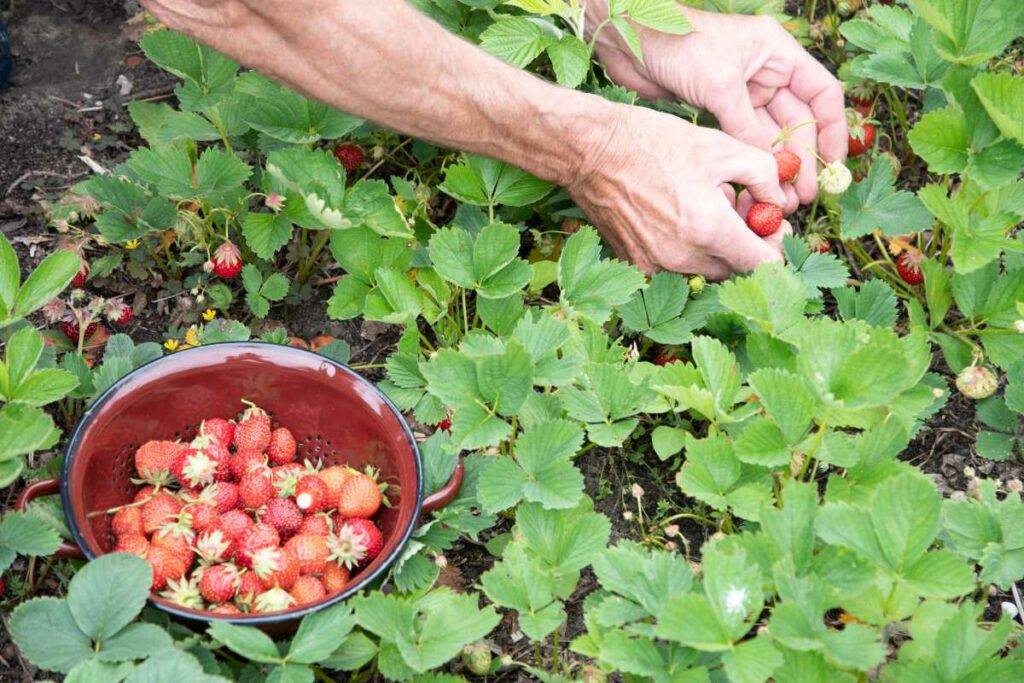Strawberries are a delightful addition to any garden, offering sweet, juicy fruits that are perfect for snacking, baking, or making jam. As a professional landscaper with a passion for growing fresh produce, I’ve had my share of successes and challenges when it comes to cultivating strawberries.
How to Grow Strawberries?
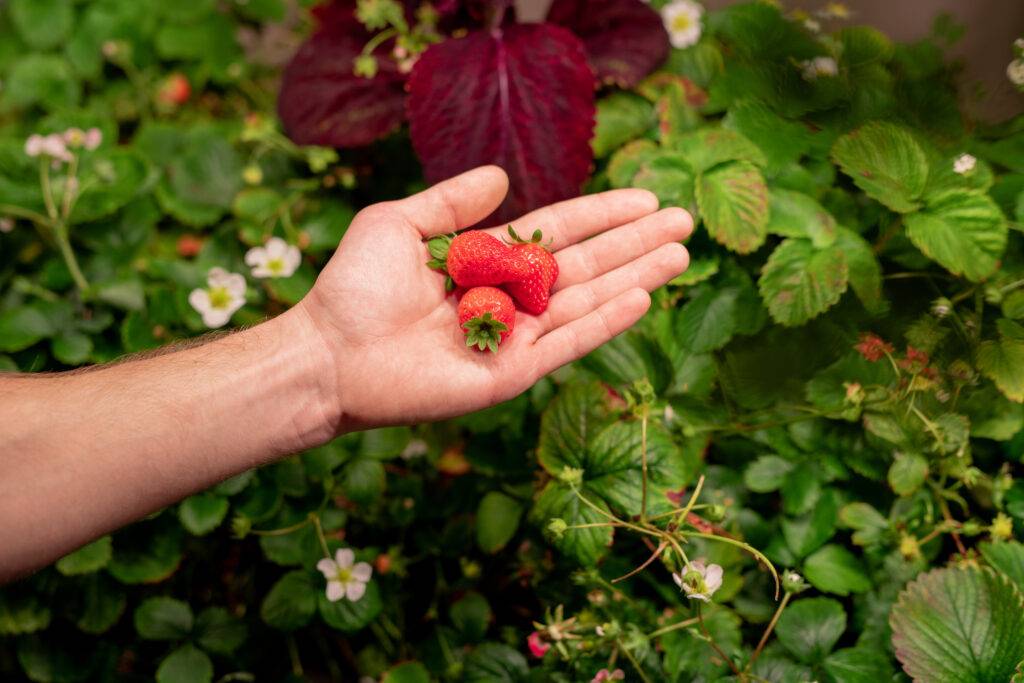
This is my journey of growing strawberries, including the best practices for planting, care, and harvesting. I’ll also cover some common issues and how to address them, along with three frequently asked questions to guide you in your own strawberry-growing adventure.
Choosing the Right Strawberry Variety
The first step in growing strawberries is choosing the right variety for your climate and garden space. Strawberries come in three main types:
- June-bearing Strawberries: These produce a large crop once a year, typically in June, and are great for those who want a big harvest for canning or freezing.
- Ever-bearing Strawberries: These produce two to three smaller crops throughout the growing season, providing a more consistent supply of fresh strawberries.
- Day-neutral Strawberries: These can produce fruit throughout the growing season as long as temperatures remain between 35°F and 85°F, offering a continuous harvest.
I opted for day-neutral strawberries because I wanted a steady supply of fruit throughout the summer. Once I chose my variety, I started planning my strawberry garden.
Selecting a Location and Preparing the Soil
Strawberries need plenty of sunlight—at least 6 to 8 hours a day—to produce sweet, juicy fruit. I chose a sunny spot in my garden with well-drained soil. To prepare the soil, I removed any weeds and added compost to improve fertility and drainage. Strawberries prefer slightly acidic soil with a pH between 5.5 and 6.5, so I tested the soil and adjusted the pH with sulfur as needed.
If your garden soil is prone to poor drainage or you have limited space, you can grow strawberries in raised beds or containers. This allows you to control the soil composition and drainage, reducing the risk of root rot.
Planting Strawberry Crowns
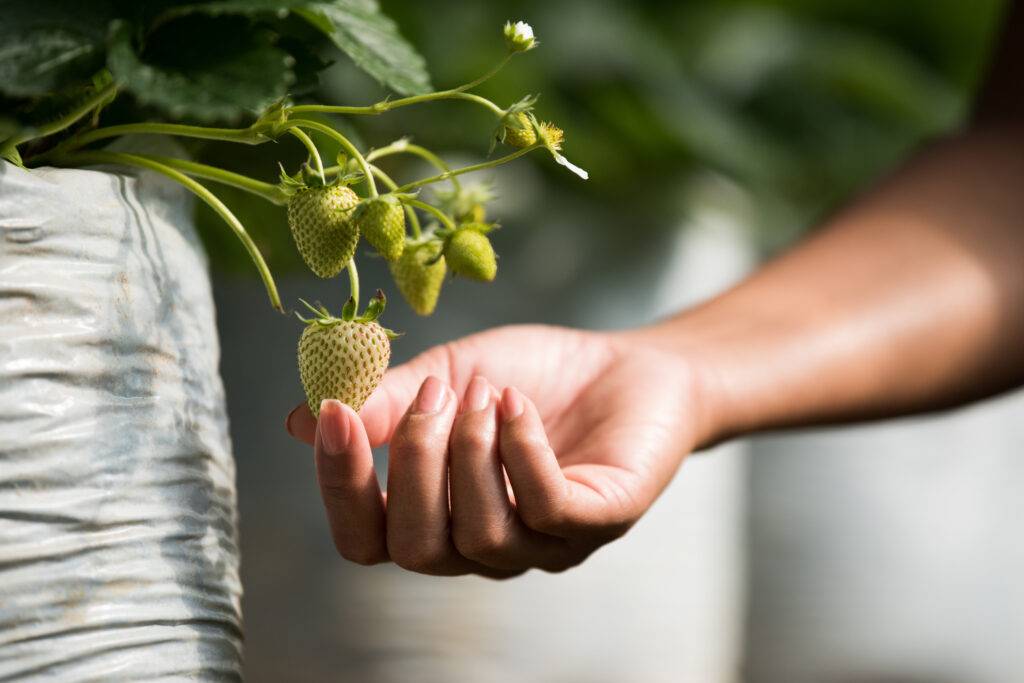
Strawberries can be grown from seeds, but I found that starting with strawberry crowns (bare-root plants) was more reliable and led to a quicker harvest. I planted the crowns in early spring, spacing them about 12 to 18 inches apart in rows. It’s crucial to plant the crowns at the correct depth: the crown (the central growing point) should be level with the soil surface, with the roots spread out beneath. Planting too deeply can cause the crown to rot, while planting too shallowly can lead to drying out.
After planting, I watered the crowns thoroughly to help them establish. I also added a layer of straw mulch around the plants to retain moisture and suppress weeds. Mulching is an important step in growing strawberries, as it helps keep the soil temperature consistent and prevents the fruit from touching the ground, reducing the risk of rot and pests.
Caring for Strawberry Plants
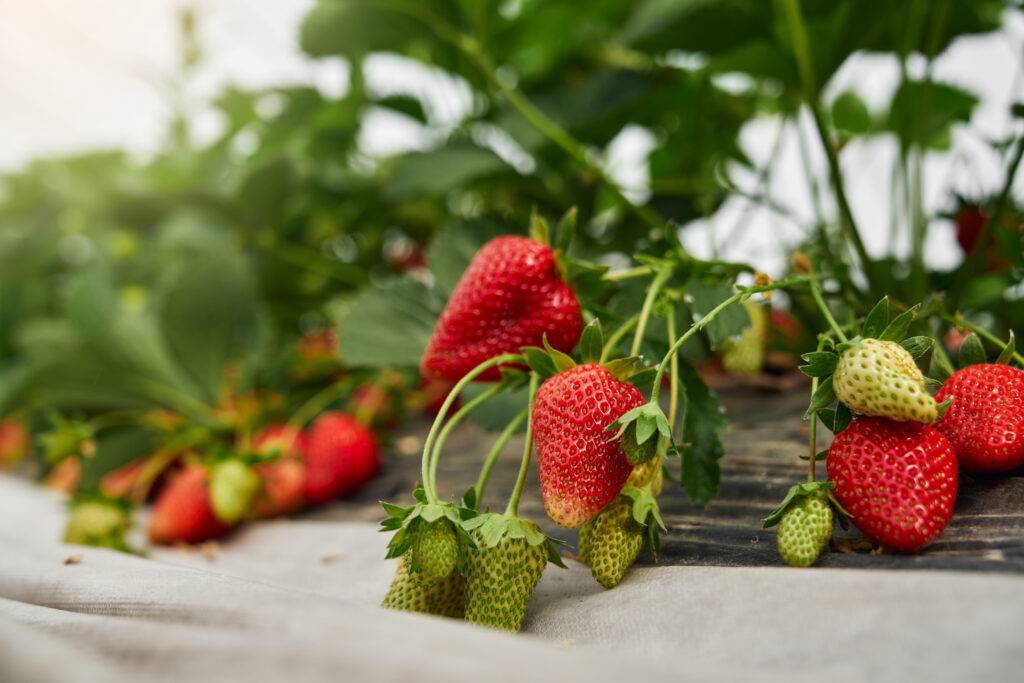
Once my strawberry plants were in the ground, I focused on providing consistent care to ensure a healthy crop. Here are some key aspects of strawberry plant care:
- Watering: Strawberries need regular watering, especially during dry spells. I aimed for about 1 to 1.5 inches of water per week, ensuring the soil remained consistently moist but not waterlogged. Drip irrigation is a great option, as it delivers water directly to the roots without wetting the leaves, reducing the risk of disease.
- Fertilizing: To promote healthy growth and fruit production, I fertilized my strawberries with a balanced fertilizer in early spring and again after the first harvest. Avoid over-fertilizing, as this can lead to excessive leaf growth at the expense of fruit production.
- Pruning and Thinning: Strawberry plants produce runners—long stems that create new plants. I pruned some of the runners to prevent overcrowding and directed the remaining runners to grow in a controlled manner. This ensured each plant had enough space to thrive.
- Pest and Disease Control: Strawberries are susceptible to pests like aphids, slugs, and birds, as well as diseases like powdery mildew and gray mold. To prevent these issues, I used organic pest control methods, such as neem oil and diatomaceous earth. I also ensured proper spacing and airflow to reduce the risk of fungal diseases.
Harvesting Strawberries
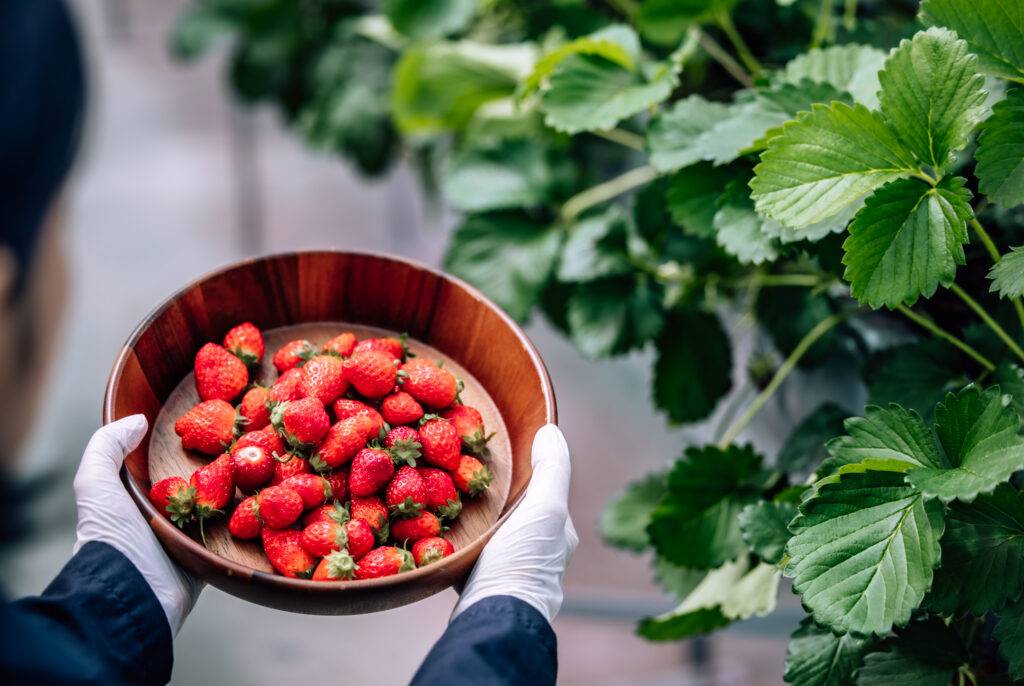
Strawberries typically take 4 to 6 weeks to ripen after flowering, depending on the variety and growing conditions. I knew it was time to harvest when the fruit was fully red and slightly soft to the touch. I picked the strawberries early in the morning, when they were at their sweetest, using scissors to avoid damaging the plants.
It’s important to harvest strawberries regularly to encourage continued fruiting and prevent overripe fruit from attracting pests. Once picked, strawberries should be refrigerated and used within a few days, as they don’t have a long shelf life.
Common Issues and How to Address Them
Growing strawberries isn’t without its challenges. Here are some common issues I faced and how I tackled them:
- Birds Eating Strawberries: Birds are notorious for snacking on ripe strawberries. To protect my crop, I used bird netting over the strawberry plants. This simple solution kept the birds at bay without harming them.
- Slugs and Snails: These pests can damage strawberry plants and eat the fruit. I used diatomaceous earth around the base of the plants to deter slugs and snails. Additionally, placing shallow dishes of beer near the plants can attract and trap slugs.
- Gray Mold and Powdery Mildew: Fungal diseases can be a problem in humid conditions. To prevent these diseases, I ensured proper spacing between plants, avoided overhead watering, and used organic fungicides when necessary.
The Joy of Fresh Strawberries
Growing strawberries is a rewarding experience. The sight of ripe, red strawberries in the garden is a delightful reminder of the effort and care that went into their cultivation. Whether you’re growing strawberries for personal enjoyment or to share with family and friends, the process offers a connection to nature and the satisfaction of producing your own food. Read more about raised garden beds.
Conclusion
If you’re considering growing strawberries, remember that they require sunlight, well-drained soil, and consistent care. Choose the right variety for your garden, plant the crowns at the correct depth, and provide adequate water and nutrients. With proper care and attention to common issues, you’ll be rewarded with a bountiful harvest of sweet, juicy strawberries.
How long does it take for strawberries to grow and produce fruit?
The time it takes for strawberries to grow and produce fruit depends on the variety and growing conditions. Generally, strawberries take 4 to 6 weeks to ripen after flowering. June-bearing strawberries produce a single crop once a year, typically in June, while ever-bearing and day-neutral varieties can produce multiple crops throughout the growing season.
If starting from strawberry crowns, you can expect a harvest within a few months. If growing from seeds, it may take a full season or longer for the plants to mature and produce fruit.
Can I grow strawberries indoors or in containers?
Yes, you can grow strawberries indoors or in containers, making them a great option for those with limited garden space. When growing indoors, ensure the plants receive sufficient light, either from a sunny window or artificial grow lights. For container growing, choose a pot with good drainage and fill it with high-quality potting mix. B
e sure to water regularly and provide proper nutrients, as container plants may require more frequent feeding. Day-neutral strawberries are particularly well-suited for container growing due to their continuous fruit production.
What is the best way to protect strawberries from pests and diseases?
To protect strawberries from pests and diseases, consider the following strategies:
Use organic pest control: To combat common pests like aphids, slugs, and snails, use organic methods such as neem oil, diatomaceous earth, or homemade insecticidal soap. Bird netting can protect strawberries from birds.
Ensure proper spacing and ventilation: Adequate spacing between plants allows for better airflow, reducing the risk of fungal diseases like gray mold and powdery mildew.
Avoid overhead watering: Water at the base of the plants to keep the leaves dry, minimizing the risk of fungal infections.
Apply mulch: Mulching with straw or other organic materials helps prevent the fruit from touching the soil, reducing the risk of rot and providing a barrier against certain pests.
